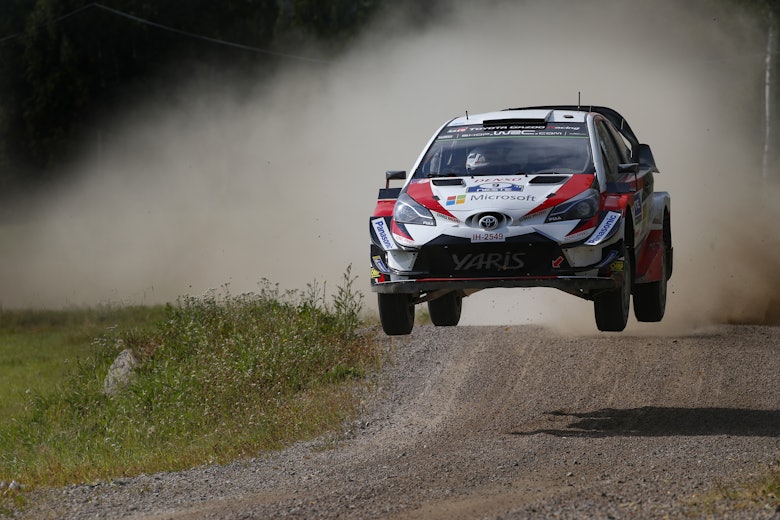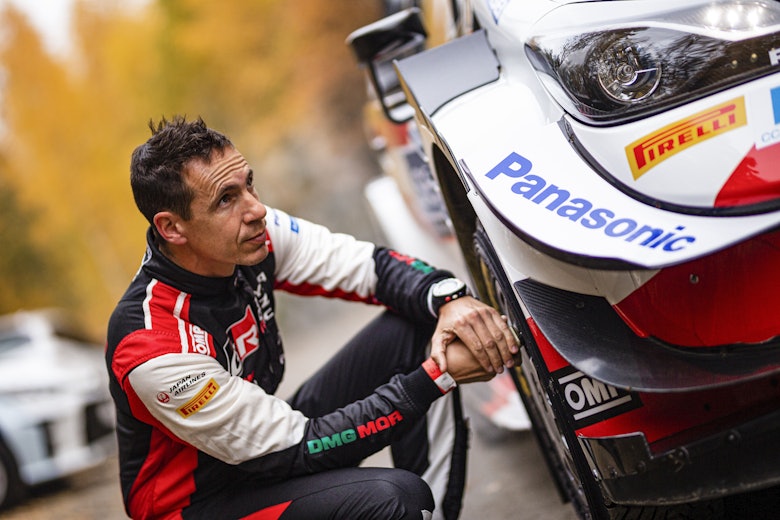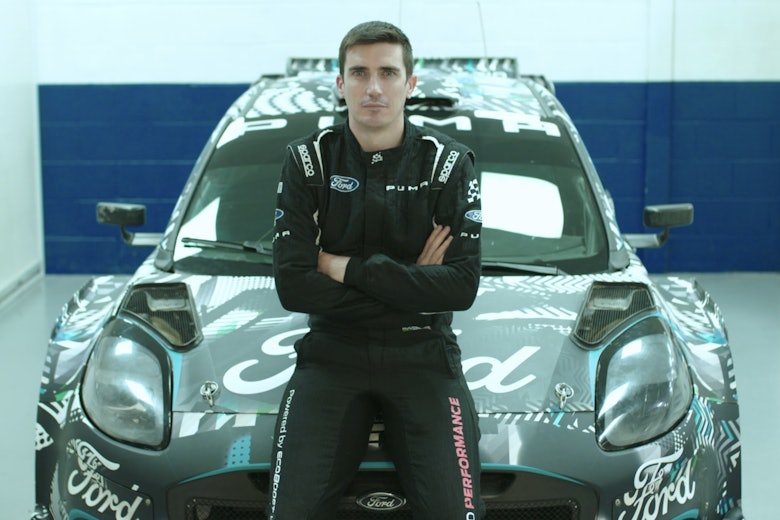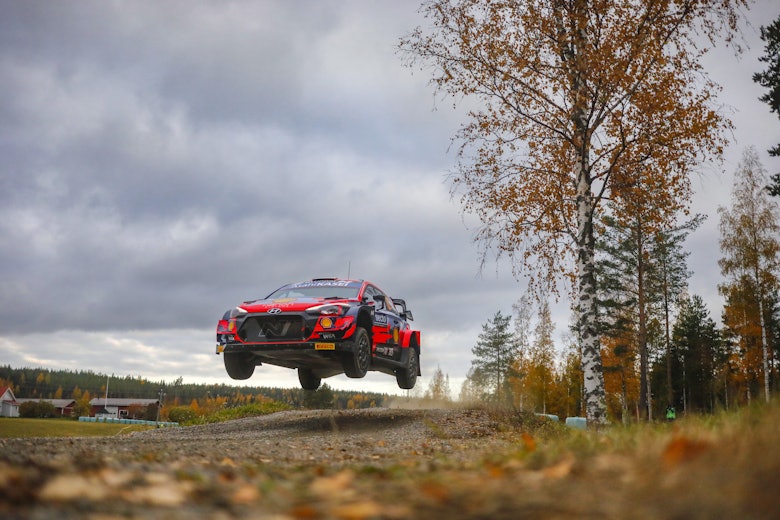After leaving the team for Citroën ahead of the 2019 World Rally Championship season, Esapekka Lappi will be a Toyota driver once more in 2022 as he shares a ride with Sébastien Ogier who is scaling back his rallying commitments.
Toyota picked Lappi up from Škoda Motorsport and promoted him into the top class of the WRC in 2017, and it was a partnership that flourished as Lappi won Rally Finland on just his fourth event for the team.
But from there his form began to wane, and Lappi eventually engineered an exit as he was known to not always see eye-to-eye with then-team principal Tommi Mäkinen.
His move to Citroën after was a poisoned chalice though and when the brand left the WRC at the end of 2019, Lappi sought refuge at M-Sport with Citroën still paying his wages.
This season, he regressed to WRC2 and dominated both Arctic Rally Finland and Rally Portugal in a Volkswagen Polo GTI R5 to capture Toyota’s attention. And the rest, as they say, is history.
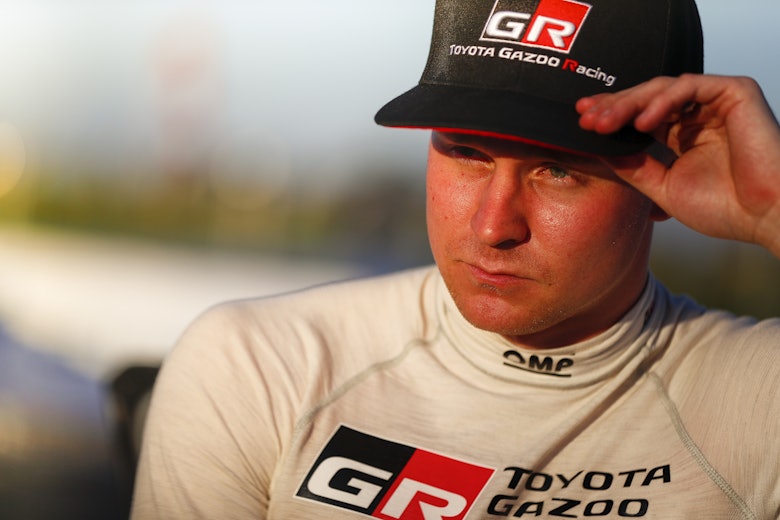
But Lappi’s tale has been retold by other drivers in different eras before in the WRC, and that got DirtFish thinking. Which have been the best – and worst – homecomings in the history of the championship?
Lappi will very much be hoping his return to Toyota will fit the former description, and all signs so far would point towards that. But sometimes, remarrying after divorce doesn’t always work out for the best.
Worst: Sébastien Ogier – Citroën (2019)
Let’s start with the most topical one – given Lappi made this same move – shall we? Sébastien Ogier started his WRC career in a Citroën in 2008, winning the Junior WRC title in a C2 S1600.
Two years later Ogier won his first WRC rally in a C4 WRC for the Citroën Junior Team, prompting him to be promoted to the main squad for gravel rallies. In 2011, as the DS3 WRC was launched, Ogier was full-time in the main squad as Sébastien Loeb’s team-mate but their relationship soon became fractious and unmanageable as Ogier fought hard for equal status, much to Loeb’s distaste.
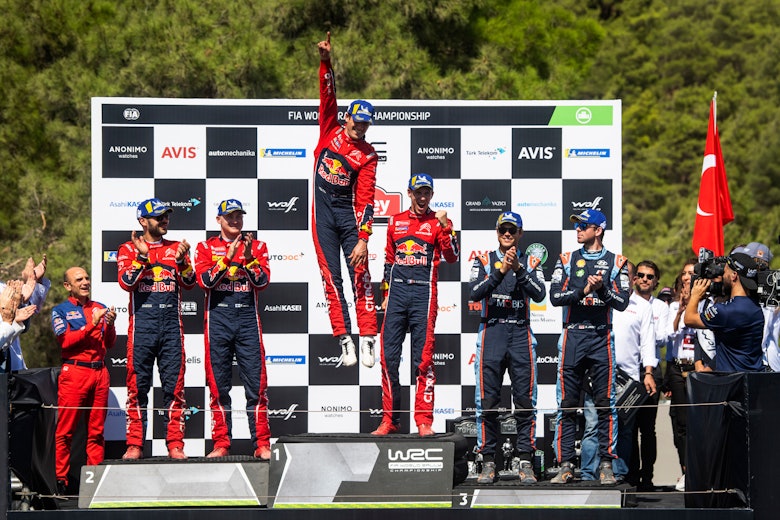
Photo: Red Bull Content Pool
Ogier headed for Volkswagen and duly won four world championships between 2013-16, before adding two more at M-Sport Ford in 2017 and ’18 when VW pulled out of the WRC. But for 2019, Ogier returned home to Citroën to pilot the troubled C3 WRC.
The season started promisingly with two wins from the first three rallies, but it soon became clear that the fundamentally flawed C3 wasn’t good enough for even Ogier to win with. By mid-season Ogier was becoming increasingly vocal about his frustrations and began working on an exit plan.
Citroën then pulled the plug on its WRC program – blaming Ogier’s decision to move to Toyota to replace Ott Tänak as the reason. Ogier reclaimed his WRC crown in 2020 and looks set to do the same in 2021, leaving Citroën as the only manufacturer he’s driven for but not won the WRC title with.
Best: Carlos Sainz – Toyota (1998-99)
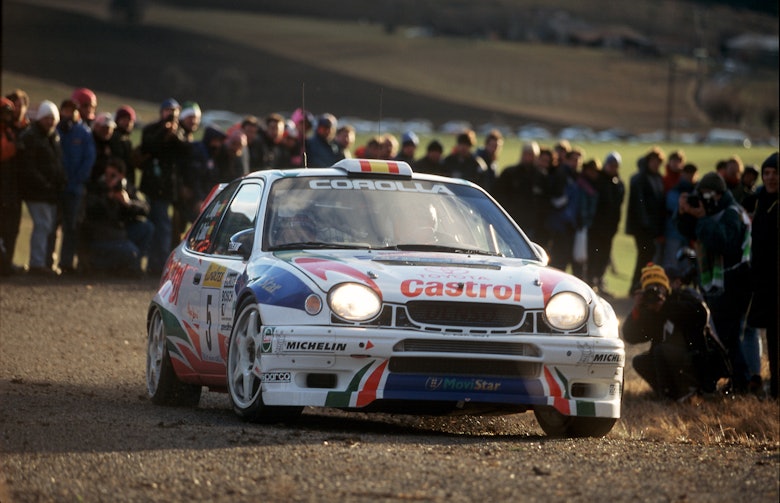
Photo: McKlein Image Database
Another move with modern-day relevance given Lappi is also returning to Toyota. Carlos Sainz signed for Toyota in 1989 as Juha Kankkunen’s team-mate and despite a troubled start with two crashes in two events, would claim his first podium in Finland.
A year later, Sainz scooped his maiden title months after his first win, and although he surrendered the crown in ’91 would reclaim it again in 1992 before an ill-fated move to drive a privately-run Lancia Delta Integrale in ’93.
Sainz was all set to rejoin Toyota in 1996 after his relationship with Colin McRae at Subaru had become troubled, but that was put on ice as the team was disqualified for its turbo cheat scandal in ’95.
After two years seeking refuge at Ford, Sainz finally returned to Toyota in 1998 to drive a Corolla WRC and immediately took victory on the Monte Carlo Rally. Ultimately ’98 is remembered for pain rather than joy given the gut-wrenching engine failure meters from the final finish-line of the season that robbed him of the title.
But Sainz’s move to Toyota was overall a positive one. He helped the marque claim the 1999 manufacturers’ title before it left the WRC, forcing Sainz to return to another of his former employers: Ford.
Worst: Juha Kankkunen – Toyota (1988-89)
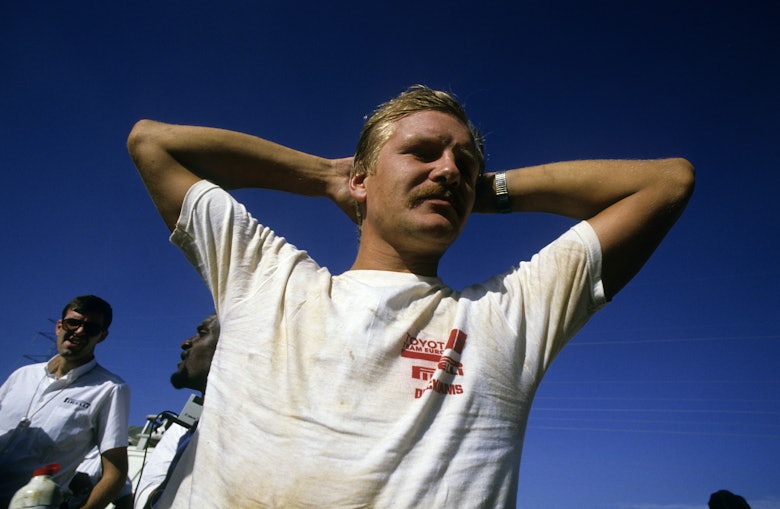
Photo: McKlein Image Database
Juha Kankkunen’s professional WRC career began with Toyota, driving a rear-wheel-drive Celica Twincam Turbo up against the all-wheel-drive Group B supercars. He would soon get his chance in a car capable of winning regularly, jumping ship to Peugeot in 1986 and winning the title.
But as Group B was outlawed Peugeot disappeared and Kankkunen signed for Lancia, winning the ’87 title too. However for 1988 he was on the move again, returning to Toyota as it constructed a new project.
The new Celica GT-4 ST165 was radical in design and proved itself to be fast, but initial results were woeful. On Kankkunen’s first three rallies with the car he retired with engine problems.
The following 1989 season was more prosperous as Kankkunen managed to win in Australia, but Toyota was outgunned by Lancia once again. Frustrated by the issues and lack of winning, Kankkunen bailed and
went back to Lancia for 1990.
Best: Juha Kankkunen – Toyota (1993-96)
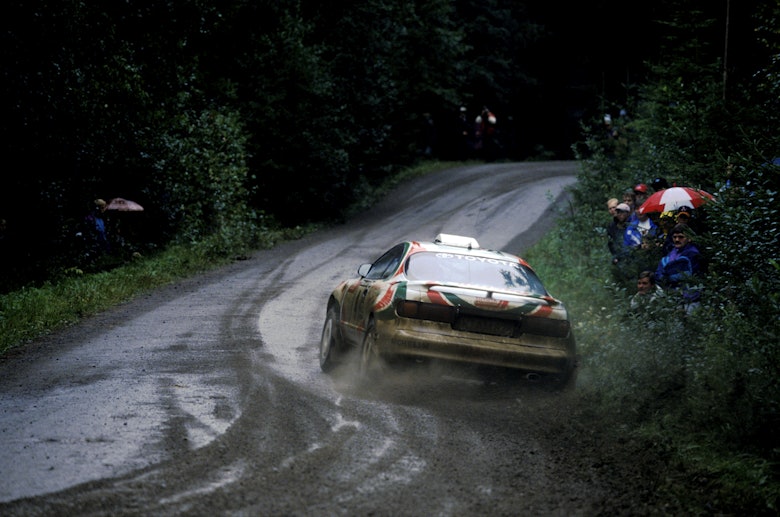
Photo: McKlein Image Database
Kankkunen’s move to Lancia would ultimately work out as it yielded a third title in 1991. But when Lancia reduced its full-time WRC effort, Kankkunen returned to Toyota for a second time in 1993.
This time, the partnership would achieve the success it deserved. Now driving the updated Celica ST185, Kankkunen was competitive from the off and won four rallies across the season to secure his fourth – and final – world title, but first with Toyota.
Although he’d be pipped by team-mate Didier Auriol the following season and was then restricted in ’96 following Toyota’s ban, Kankkunen’s second move back to Toyota has to be chalked up as a success as he got another title and avoided a troubled Delta Integrale as Sainz – who moved the other way – found out to his cost.
Worst: Mikko Hirvonen – Ford (2014)
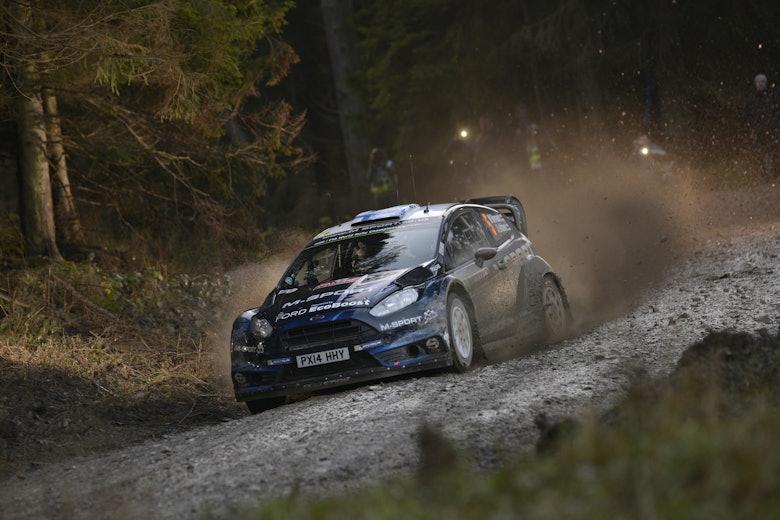
Photo: M-Sport World Rally Team
It might be harsh to label Mikko Hirvonen’s return to Ford and M-Sport in 2014 as one of the worst homecomings, but given the partnership never hit the heights it did the first time around, it can’t really be considered a resounding success.
Hirvonen’s debut WRC season was as a Ford-supported driver in 2003 before he moved to Subaru for 2004. That proved to be a bit of a disaster, so Hirvonen returned to Ford to drive a private Focus WRC on select rounds, earning his first ever podium in Spain.
He was therefore promoted to the works team alongside Marcus Grönholm in 2006 and helped Ford win two manufacturers titles before becoming the team’s spearhead from 2008-11 when Grönholm retired.
Hirvonen fought Loeb hard in 2009 and ’11 in particular but fell just short, prompting a move to Citroën. But after that failed to materialize in a world title either, he returned to driving Fords for 2014 for his final WRC season.
It was clear that Hirvonen’s raw edge had evaporated slightly, and while it was not a bad season by any means with fourth in the championship, both the independent M-Sport team and Hirvonen were far from the title-challenging force they’d been in the late 2000s.
Best: Dani Sordo – Citroën (2013)
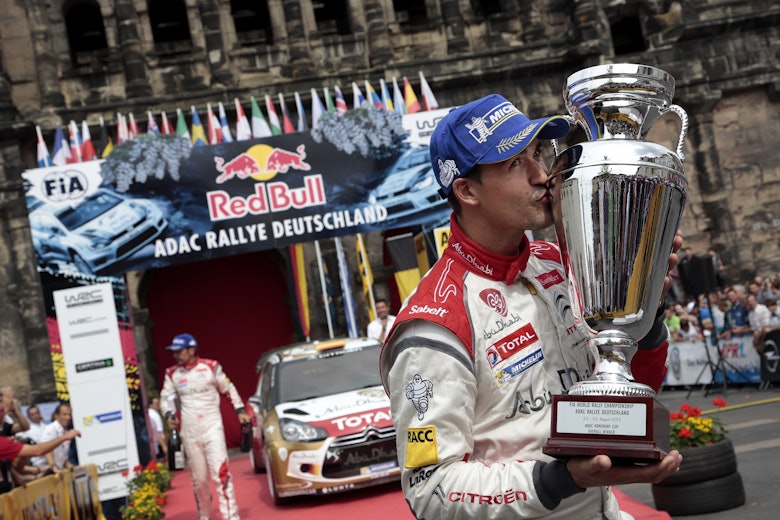
Photo: Red Bull Content Pool
Winning the JWRC title in 2005 with a Citroën C2 S1600, Dani Sordo was elevated into the works WRC team for 2006 – that season being operated by Kronos Racing as Citroën took a year out to develop its C4 WRC for ’07.
Partnered with Sébastien Loeb, Sordo had a great tutor but was always perhaps destined to live in his shadow. That’s exactly how Sordo’s early WRC career would play out; the Spaniard bagging a stupendous 28 podium finishes, often second to Loeb, before he ever won a WRC rally.
Sordo was ousted from the Citroën set-up when Ogier’s rapid rise became too great for the team to ignore, and Sordo therefore sought a new challenge and joined Mini for 2011. The less said about that project, the better.
But with Mini leaving the WRC almost as quickly as it had announced it was joining, Sordo needed a ride and he therefore returned to Citroën in 2013 to partner Mikko Hirvonen.
It was one of his best seasons as he claimed fifth in the championship and, crucially, finally won a round of the WRC in Germany. That raised Sordo’s stock and made him an attractive option for Hyundai who duly snapped him up for its WRC comeback in 2014, and Sordo has remained part of the family ever since.
Worst: Armin Schwarz – Škoda (2004-05)
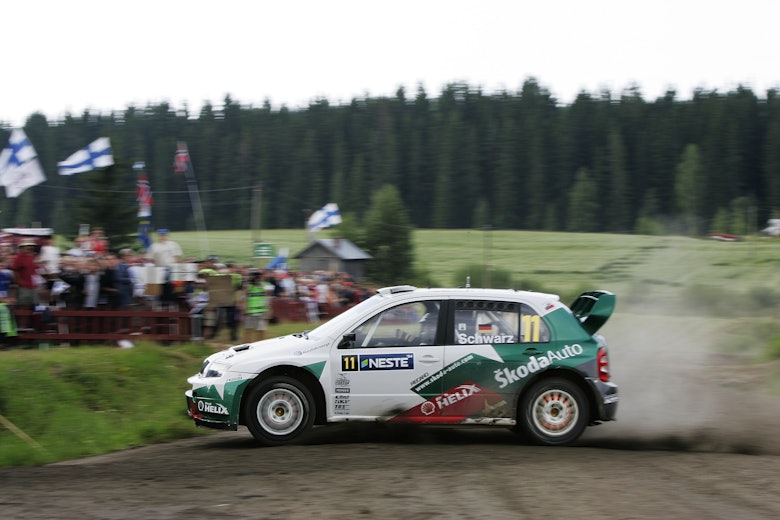
Photo: McKlein Image Database
Armin Schwarz is a name that often appears on these sorts of lists for the wrong reasons, often touted as a ‘one hit wonder’ because he won just one world rally. But that’s nonsense. He was a very talented driver that just never got the right opportunity at the right time.
His move from Hyundai to Škoda certainly wasn’t the right opportunity.
Schwarz won Rally Spain in 1991 with Toyota, before a move to Mitsubishi that actually took him back to Toyota and then Ford once his long-time employer was evicted from the WRC. In 1999 he teamed up with Škoda as the manufacturer committed to the WRC with its Octavia model.
Their first year together was a bit of a disaster, but results did pick up in 2000 – particularly on rough rallies with fifth on the Acropolis – before Schwarz put the Octavia WRC Evo2 on the podium on the 2001 Safari Rally.
He moved to Hyundai for 2002, but when it suddenly canned its WRC program Schwarz needed a new employer and therefore was back behind the wheel of a Škoda in 2004, just two years after he left the team.
The fact he was regularly finishing outside the top 10 speaks volumes about Schwarz’s time driving a Fabia WRC. Fittingly, his last ever rally for Škoda and in fact of his WRC career equaled his best result of eighth across the two years, but this was a poor chapter within an underwhelming marriage anyway.
Best: Richard Burns – Subaru (1999-2001)
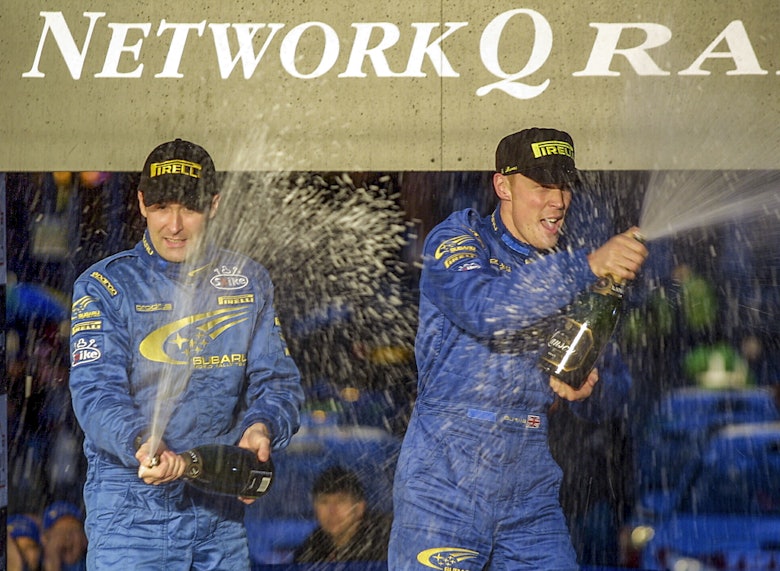
Photo: McKlein Image Database
This one is tainted with a sad ‘what might have been’ as Richard Burns was all set to return to Subaru for a second stint in 2004, only for the brain tumor that curtailed his 2003 season with Peugeot and later claim his life in 2005 to deny him that chance.
Burns won the British Rally Championship in a Subaru Legacy in 1993 and kept his ties with the marque, moving up into the WRC and Asia Pacific Rally Championship in ’94, scoring an often forgotten third place on Rally GB 1995 as Colin McRae won the title.
But for ’96, Burns jumped ship to arch rival Mitsubishi and stayed there for three years – helping it to the 1998 manufacturers title in a season where he took his very first WRC victory.
However Burns would be black sporting blue overalls in 1999 as he led Subaru’s attack in an Impreza WRC, alongside four-time WRC champion Kankkunen. This was arguably the peak of Burns’ career as he won eight rallies across three years and of course the 2001 world championship.
But in terms of pace, Burns and the Impreza S6 WRC in particular were a fearsome combination. The Christian Loriaux-designed machine was radical and rapid, and Burns certainly got the most out of it as he pushed hard for but just missed out on the 2000 title.
Despite the partnership ending in messy fashion in court, Burns’ return to Subaru gave him the glory years of his career so can only be considered as a good move.
Worst: Mads Østberg – Ford (2016)
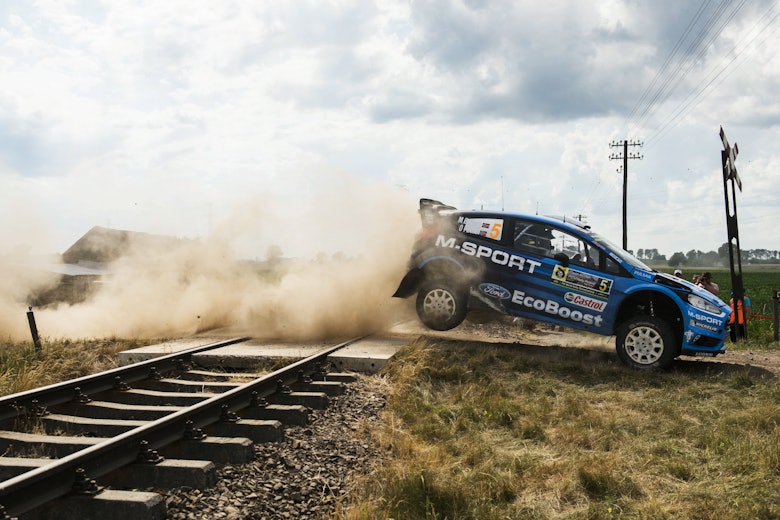
Photo: Jaanus Ree / Red Bull Content Pool
Mads Østberg’s move to Ford in 2016 made total sense on paper, but with the benefit of hindsight it’s a switch the Norwegian now regrets.
Østberg’s early career was attached to the Subaru marque as he ran his own Impreza WRC – with support from Subaru Norway – in the WRC. But it is Ford and M-Sport that gave him his first professional WRC drive in 2010 and then a full-time seat in 2011.
It was a decent season, bookended by two podiums.
After a year of his family’s Adapta team running a Fiesta WRC with M-Sport support and claiming a maiden win on Rally Portugal, Østberg drove the works car once more in 2013 before moving across the service park to Citroën in 2014. This proved to be a good career move as he would be a regular on the podium.
But with Citroën scaling back its commitment in 2016 and an opportunity presenting itself at M-Sport, Østberg moved back to Malcolm Wilson’s squad. Despite two encouraging podiums in Sweden and Mexico, it was a rather uninspiring year at best and Østberg was forced to run his own car in 2017.
Had he stuck at Citroën he likely would have driven a C3 WRC which, although was a flawed machine, would have kept him in a professional contract with a works team.
Best: François Duval – Ford (2008)
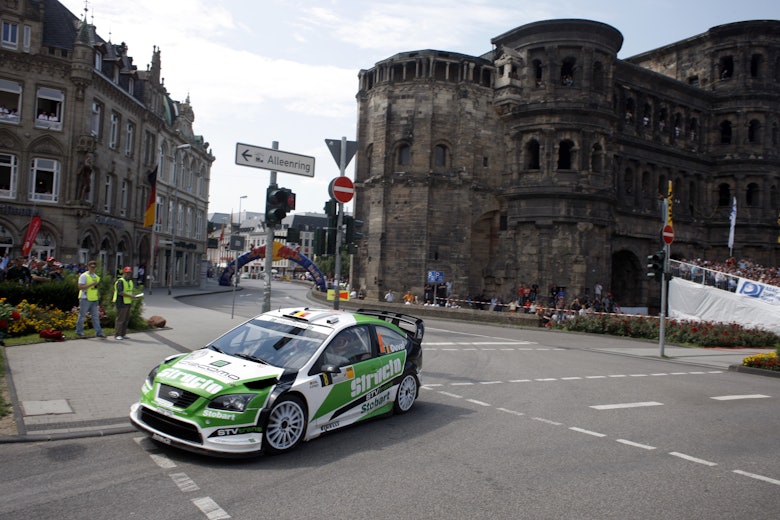
Photo: McKlein Image Database
Like Schwarz, François Duval is often a driver who appears in these features for all the wrong reasons. But this time, he finds himself in the positive section with a return to the Ford stable in 2008.
Duval had risen through the rallying ranks with Ford driving a Puma S1600 in the JWRC before progressing to drive a Focus WRC for the works team in 2003 alongside Markko Märtin.
It turned out to be a handy partnership, as Duval scooped a collection of podiums before opting to join Loeb at Citroën for 2005 following Sainz’s retirement. Although he won that year’s Rally Australia, this was a disastrous decision for Duval’s career that left his reputation in tatters.
He therefore spent the next couple of years somewhat in the wilderness, driving a privately-entered Škoda Fabia WRC and then Citroën Xsara WRC before scoring a deal to drive for Ford’s second-string M-Sport team for half of the 2008 season.
Back in a Ford, Duval thrived. Aside from two accidents in New Zealand and Japan, Duval’s 2008 formbook was impeccable with two thirds, two fourths and a sixth-place finish – excelling on asphalt in particular.
He was even called up to score points for the main Ford team in Spain in place of regular driver Jari-Matti Latvala; a decision which paid off as Duval was running ahead of Mikko Hirvonen too before slowing to allow the regular driver to take third spot.
Although Duval wouldn’t net a deal to drive in 2009, it was fitting that he managed to turn his career trajectory around with the team that gave him his initial chance.



